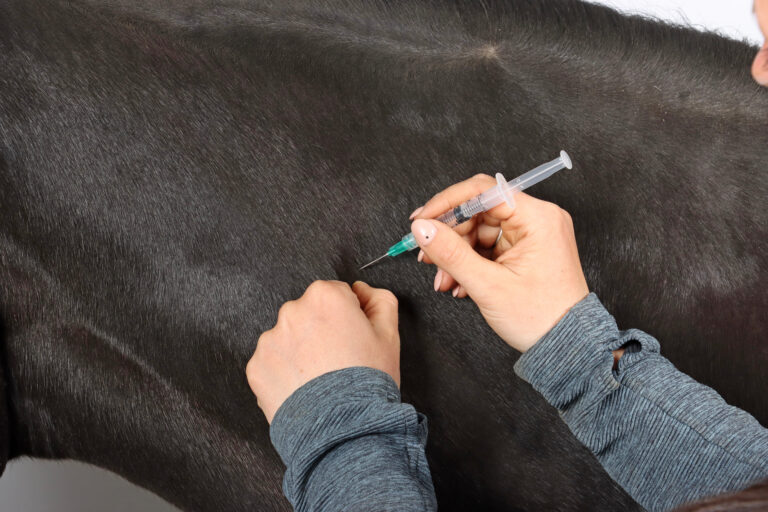
Consider regional limb perfusions for antimicrobial prophylaxis following surgery, wounds accompanied by cellulitis, or osteomyelitis in the distal limb. Preferably, this technique would be guided by culture/sensitivity results for antibiotic selection.
“Regional limb perfusions are intended to treat conditions in the distal limb, so injuries over the body are not effectively treated with this technique,” said Holly Stewart, VMD, PhD, Dipl. ACVS (LA), assistant professor of large animal surgery at Penn Vet’s New Bolton Center, during a Burst presentation at the 2024 AAEP Convention. “And if you are planning to refer the horse for further treatment, be sure to speak to your referral facility first, because they may want to obtain a sample for bacterial culture before antibiotics are administered.”
Regional Limb Perfusion Technique
Stillness and sedation are the keys to success. A combination of detomidine, butorphanol, and acepromazine are an ideal sedative “cocktail,” which can be topped off with xylazine when needed.
“Most importantly, take care of the vein … don’t blow it!” said Stewart. “This technique requires accurate and quick venipuncture, preferably with a 25-gauge butterfly catheter. Use a wide tourniquet, loop the catheter tubing through tape on the limb, and administer the antibiotic over the course of two to three minutes.”
Place a Band-Aid over the venipuncture site after administering the antibiotic. Once you’ve finished the regional limb perfusion, remove the tourniquet before removing the bandage so the change in pressure doesn’t blow the vein. Apply a small amount of topical diclofenac cream over the venipuncture site at the end of the procedure, and place a light bandage to help keep the vein in the best condition possible in case you need to repeat the procedure.
Typically, you should use either the saphenous or cephalic veins, but if the foot is affected, you can use the palmar and plantar digital veins. Stewart said some laminitis cases have a component of osteomyelitis and might benefit from regional limb perfusion.
Antibiotic Selection
“Importantly, regional limb perfusions typically use a concentration-dependent antibiotic (unless otherwise guided by bacterial culture and antimicrobial sensitivity testing), which is always diluted before administration,” said Stewart.
Amikacin is most common in Stewart’s experience, typically 1.5-2.5 grams of amikacin diluted to a total of 20 milliliters with sterile saline.
Related Reading
- Chlorhexidine Flush: Potential Treatment for Septic Arthritis in Horses?
- Using Absorbable Antibiotic Beads to Treat Infected Wounds in Horses
- Antimicrobial Stewardship With Honey
Stay in the know! Sign up for EquiManagement’s FREE weekly newsletters to get the latest equine research, disease alerts, and vet practice updates delivered straight to your inbox.


![[Aggregator] Downloaded image for imported item #18383](https://s3.amazonaws.com/wp-s3-equimanagement.com/wp-content/uploads/2025/09/30141253/EDCC-Unbranded-29-scaled-1-768x512.jpeg)

